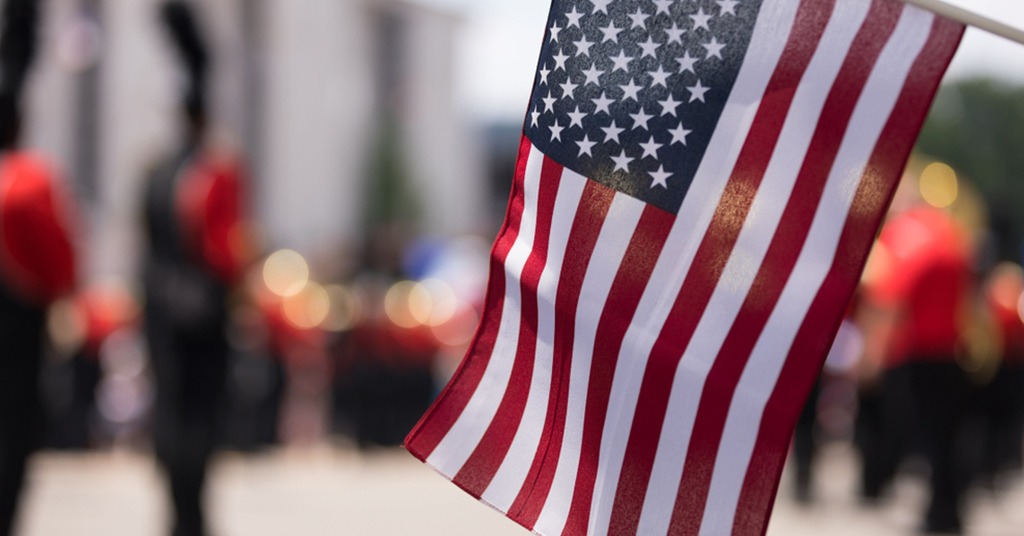The background and chronology of events of the US vs China trade war, one of the biggest trade wars ever

The US vs China trade war: background & chronology. Source: shutterstock.com
Today PaySpace Magazine offers you to remember the progress of events and will consider the latest news related to the US vs China trade war.
The end of the era of cooperation
Last fall, a big speech by US Vice President Mike Pence ended the era of expanded cooperation between the United States and China. The era began in the early 2000s with the entry of China into the World Trade Organisation, which reached a climax during the global financial crisis of the late 2000s and has now exhausted itself. If ten years ago thoughts were expressed about the upcoming joint world government of the USA and China (a China-US Condominium), now they are talking more about a “cold”, if not a “hot” war between them.
In his speech, Vice President Mike Pence outlined a wide range of American claims against China: namely building up military power, using debts to gain advantages over financially vulnerable countries (this is how the epoch-making Chinese Belt and Road Initiative is perceived in the USA), China’s information attacks on the US media, think tanks and university campuses, and finally, meddling in the elections. Pence then referred to a senior member of the United States Intelligence Community, who told him that Russian intervention pales in the shadow of the Chinese one.
It is also difficult to ignore the “Trump factor”, if we are talking about the US-China relations of recent years. The American President not only did not try to help to contain the intensifying conflict, but also aggravated the situation during his election campaign. However, the dynamics of relations do not depend so much on individuals and their party affiliation. The era of cooperation was being prepared by Democrat Bill Clinton, launched by Republican George W. Bush, reached its peak under Democrat Barack Obama, and has waned under Republican Donald Trump. In China, the Communists were in charge all this time.

The US claims about China are broad and do not have clear limits. Source: shutterstock.com
China has clearly changed and can no longer be perceived in the United States as a friendly country. The US claims about China are broad and do not have clear limits. The United States is not satisfied with the theft of intellectual property by China, the purchase of sensitive technologies through mergers and acquisitions, state protectionism that distorts market competition, currency manipulation, attacks on human rights, and internal Chinese authoritarianism. Thus, not just different business models have collided. It is something more; it is a collision of different philosophies. For example, in China, they are inclined to consider that each purchased item is acquired along with the technologies that it contains. Therefore, it is totally legal to reproduce these very technologies, since you’ve already paid for them (by purchasing the final product). USA citizens and manufacturers cannot agree with this, because their economy doesn’t work like that.
The trade war between the United States and China exacerbates ideological and military contradictions, making them more explosive. In turn, military confrontation creates a bad background for resolving trade contradictions. The United States and China may negotiate trade rules successfully, but this does not negate the profound difference between the behavior patterns of the countries.
Background and numbers
During the election campaign (in the fall of 2016), Donald Trump repeatedly criticized trade relations with China, in particular, claiming that “China is raping America”, and that the country’s currency devaluation would “suck the blood out” of America. After the election, Trump became the first elected President of the United States since 1979 to call directly the President of Taiwan, which was seen as an unfriendly gesture to the relations between the US and China, which adheres to the “One-China Policy”.

In November 2017, Donald Trump visited Beijing during his Asian tour. Source: shutterstock.com
In April 2017, Xi Jinping visited the United States, meeting Trump for the first time. In November 2017, Donald Trump visited Beijing during his Asian tour.
In 2017, trade between the United States and China amounted to $710.4B, including US exports ($187.5B), and US imports ($522.9B). Thus, the US trade deficit with China totaled $335.4B in 2018. In 2017, America imported mostly:
- Electrical machinery — $152B;
- Machinery and equipment — $117B;
- Furniture and bedding — $35B;
- Toys and sports equipment — $27B;
- Plastics — $16B.
The US, in turn, exported to China:
- Aircraft — $16B;
- Machinery — $14B;
- Electrical machinery — $13B;
- Optical and medical instruments — $9.8B;
- Vehicles — $9.4B.
In August 2017, Donald Trump initiated an investigation into the theft of US intellectual property by China. The investigation has been assigned to the Office of the United States Trade Representative.
How the US vs China trade war is going
January 23, 2018 – the US President Donald Trump set a 30% tariff on imported solar panels; the tariff will be valid for 4 years, decreasing by 5% annually (15% in the final year). China, being the world leader in solar cell manufacturing, has expressed its “strong disappointment” with such US actions.
March 2018 – based on an investigation by the Office of the United States Trade Representative on intellectual property theft by China, it was revealed that China uses discriminatory practices that harm US trade. On March 22, Donald Trump decided to prepare and publish a list of fees that will be raised in connection with the outcome of the investigation, and consider measures to limit China’s investment in strategic sectors of the US economy.

China responded to the actions of the Americans by imposing additional duties on imported US goods. Source: shutterstock.com
The beginning of April 2018 – the US released a list of approximately 1300 Chinese products. The thing is, import tariffs of these very products would increase by 25%. The list included a variety of products, such as electronics, aircraft parts, satellites, medical supplies, equipment, etc. Moreover, the total imports (from China to the United States) of these products amounted to around $50B.
April 1, 2018 – China responded to the actions of the Americans by imposing additional duties on imported meat, fruits, and other United States goods. In particular, 25% duty was imposed on pork products and aluminum scrap, and about 15% duty was also imposed on about 120 different goods. Imports of such goods to China from the United States amounted to $3B in 2017.
June 15, 2018 – the US President claimed that America was going to impose a 25% tariff for a number of goods from China (totaling $50B). Fees were motivated not only by both the defense of the American manufacturer, but also by China’s accusations of violation of intellectual rights. China’s Commerce Ministry, in turn, accused the United States of launching a trade war and said China would respond in kind with similar tariffs for US imports, starting on July 6, 2018.
July 6, 2018 – the trade war led China and the United States to impose trade tariffs on goods worth $68B. Furthermore, the Chinese government claimed that Trump’s decision was nothing but a declaration of a trade war against them.
August 8, 2018 – the General Administration of Customs (under the State Council of the PRC) decided to introduce additional tariffs in the amount of 25% on American goods worth around $16B. The new tariffs came into effect on 23 August 2018.
August 23, 2018 – the US government imposed tariffs of 25% on goods imported from China; the list includes 279 items of Chinese products with a total value of $16B. On the same day, August 23, China filed a lawsuit with the World Trade Organisation (WTO), with regard to the introduction of US additional import tariffs.

The United States increased the duty on Chinese products, which totaled in $200B worth. Source: shutterstock.com
The end of 2018 to the beginning of 2019 – active negotiations were underway.
May 10, 2019 – The United States increased the duty on Chinese products, which totaled in $200B worth. After increasing tariffs on Chinese products, US President Donald Trump announced his intention to withdraw American manufacturers from China. In response, Beijing announced that it would raise tariffs on $60B worth of American goods. The new tariffs came into effect on 1 June 2019.
On June 28, 2019 – within the framework of the G-20 summit, a meeting was held between the US President Trump and Chinese President Xi Jinping.
June 29, 2019 – the parties at the Osaka G20 summit agreed to resume trade negotiations between the countries. In turn, Trump assured that Washington would not impose new tariffs on Chinese exports.
Before the meeting, Trump announced that he was open to a trade agreement with the Chinese president. According to Trump, the achievement of this agreement would be “monumental,” because it would help ease tensions or, conversely, deepen the two largest economies in the world into an even stronger trade war.
Xi Jinping, in turn, announced before the meeting that he was ready to discuss with Trump key issues in relations between China and the United States.
SEE ALSO: The most intense brand wars of all time









